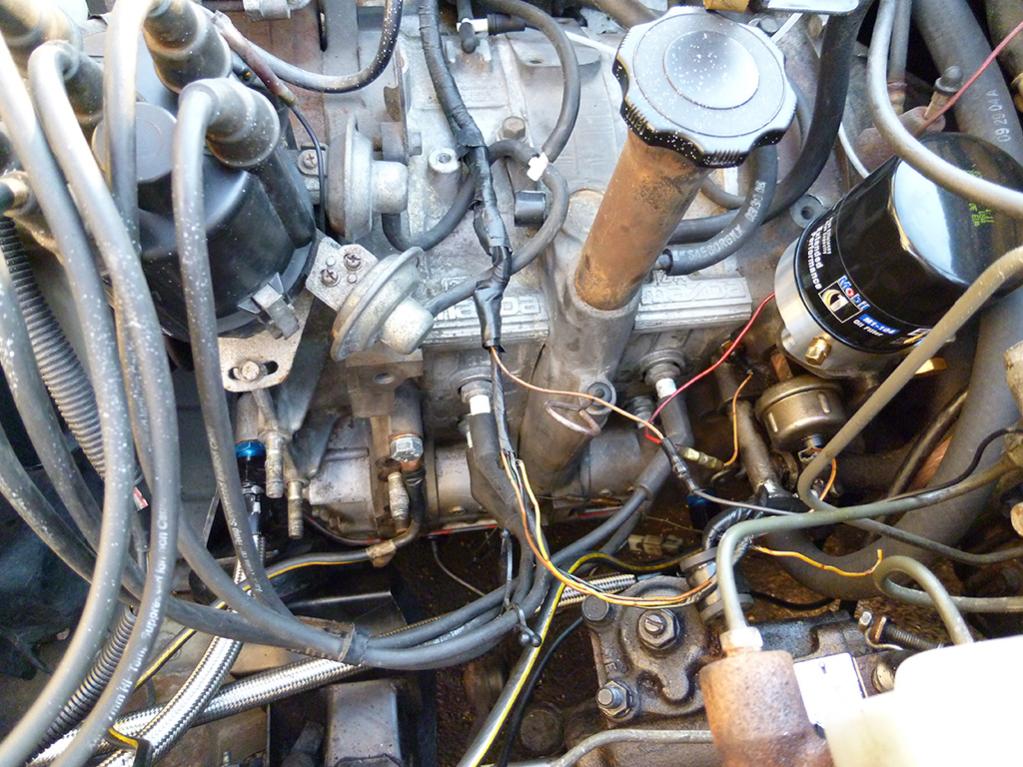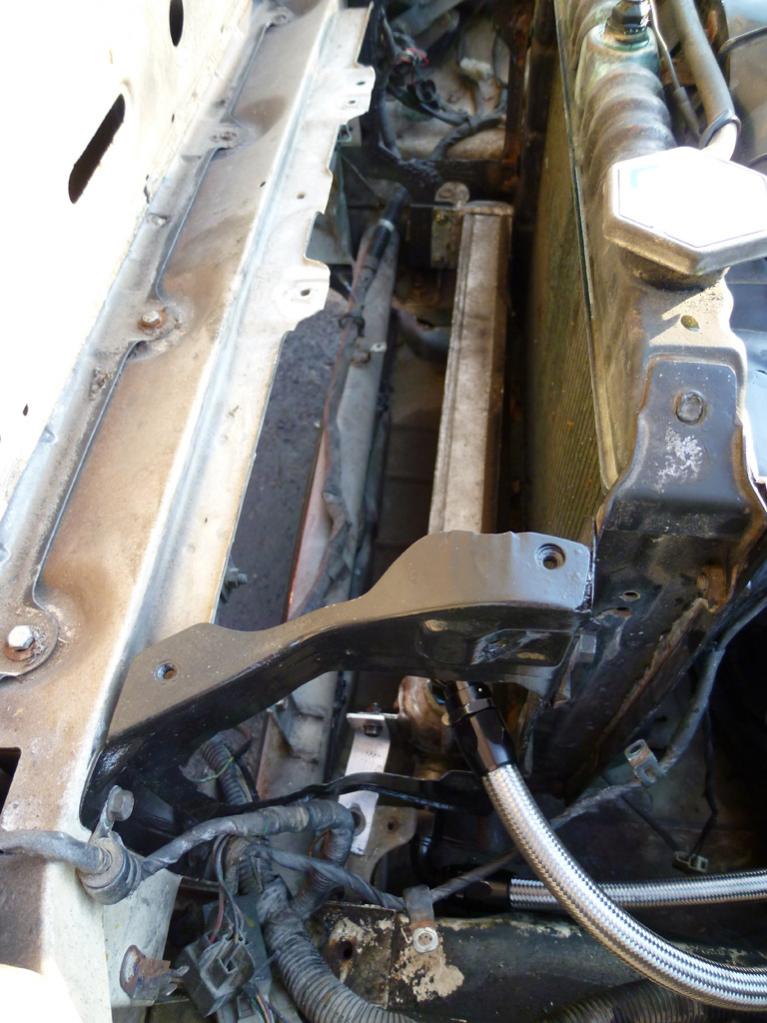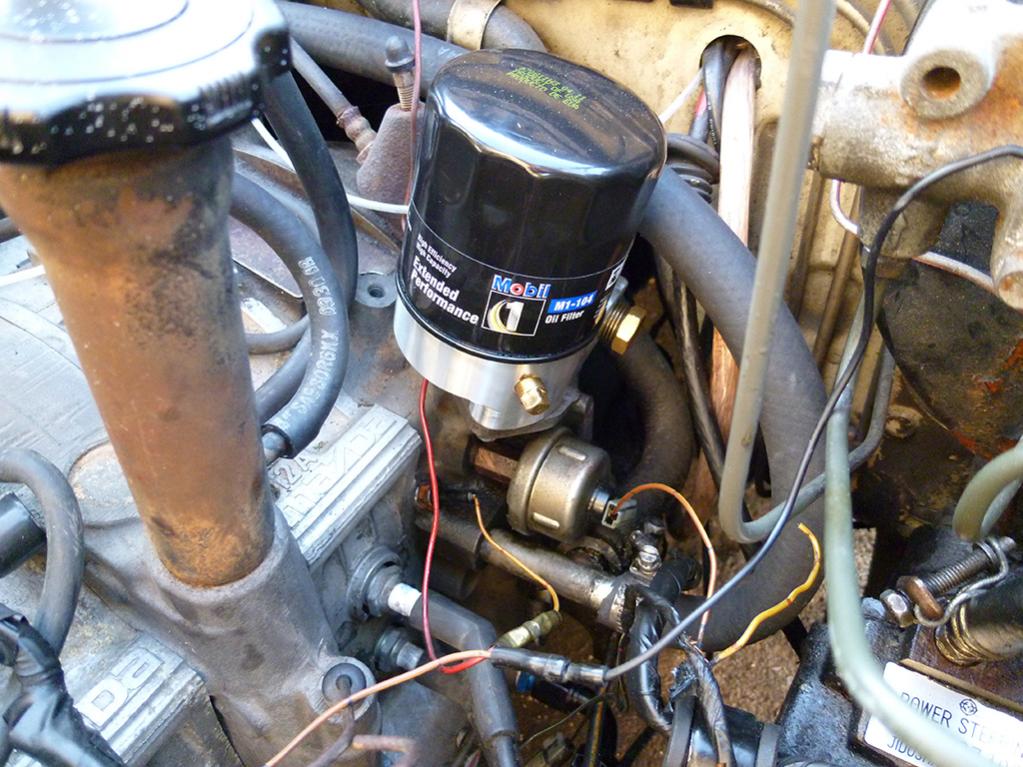Front mount oil cooler
#1
Front mount oil cooler
My personal car is a 1984 12a probly base model.
My new parts car is a is a 1981 GSL. It has a FC style front mount oil cooler.
I wanted to add a front mount oil cooler anyway, but i thought I had to get it from a FC.
Will the front mount oil cooler from a 1981 GSL work on a 1984?
I have had a quick glance at the car and the the trans is very different and the slave cylinder is somewhere else. This info is for ID of only this car.
Thanks in advance
My new parts car is a is a 1981 GSL. It has a FC style front mount oil cooler.
I wanted to add a front mount oil cooler anyway, but i thought I had to get it from a FC.
Will the front mount oil cooler from a 1981 GSL work on a 1984?
I have had a quick glance at the car and the the trans is very different and the slave cylinder is somewhere else. This info is for ID of only this car.
Thanks in advance
Last edited by phalerider; 10-01-08 at 07:09 PM.
#6
All rotaries have/had front mount oil coolers, except the 83-85 12A. Your 84 should have mounting brackets to install the fmoc in the same position as the 81. You will need to swap the radiator and maybe even the radiator side panels to mount both the short style rad and fmoc. You will need to swap the oil pedestal and line set too. The transmissions and clutch hydraulics should be the same between both cars, unless one of them is an automatic. Looking at your 2nd pic, those line look like they're cooling lines coming from the bottom of the radiator and go to the auto tranny. You can use an auto radiator in amnual tranny car, but not vice a versa.
From the manner in which you asked about needing an FC fmoc, I take it you've read my writeup in the archives. To mount an fmoc per my writeup, the FC one works better due to the way the oil lines connect. The FC and later fmocs use banjo connections, the earlier ones don't. Not only are the banjo connections more durable, they also have more 'play/adjustability' than the pre-FC ones do.
From the manner in which you asked about needing an FC fmoc, I take it you've read my writeup in the archives. To mount an fmoc per my writeup, the FC one works better due to the way the oil lines connect. The FC and later fmocs use banjo connections, the earlier ones don't. Not only are the banjo connections more durable, they also have more 'play/adjustability' than the pre-FC ones do.
Trending Topics
#8
Joined: May 2006
Posts: 715
Likes: 0
From: Holland, Michigan/ Afganistan/ Iraq/ Itatly
Taking the honey comb out is simple just unbolt the 3 nuts from the unit, the pic up a i think its a 3/4 heater block off cap, its rubber and hose clamp it on. to the side of the T fitting for the coolant so the flow pressure is more to the heater core.
Bypassing the cooling of the unit is easy, a hose to the heater core and your done, but i think you will need the adapter for the filter to the block. Racing Beat RE-Speed Mazda Trix they all have the stuff youll need!
I used this set up its a Moroso big mount cooler with some exhaust clamps on the front frame connector its the best picture i have of it.
10 an fittings and 2 reducers it ran about 200$ total and well worth every penny i can race it and stick the oil from my dipstick in my hand without a burn or anything!

Bypassing the cooling of the unit is easy, a hose to the heater core and your done, but i think you will need the adapter for the filter to the block. Racing Beat RE-Speed Mazda Trix they all have the stuff youll need!
I used this set up its a Moroso big mount cooler with some exhaust clamps on the front frame connector its the best picture i have of it.
10 an fittings and 2 reducers it ran about 200$ total and well worth every penny i can race it and stick the oil from my dipstick in my hand without a burn or anything!

Last edited by Man_in_black49464; 10-01-08 at 10:47 PM.
#9
thats what i'm concerned with the stud on the 81 doesnt seem to be removable. Scary. Gonna check again at daylight. But if I gotta by an adapter it may be a nogo.
Is there a way to remove the FMOC filter stud? Manuel doesnt say so.
Is there a way to remove the FMOC filter stud? Manuel doesnt say so.
#12
Unbolt the beehive mount from the 84 engine, (3 bolts), then bolt the filter mount from the 81 engine, (2 bolts), or another engine that has an fmoc onto the 84 engine. Refer to the 85 FSM, Sec. 2 pp.2-3 for diagrams of both the beehive and fmoc oil cooling systems. Link to the online FSMs is in my sig line. You don't need an adapter as all of the parts for the swap are stock and interchangeable from the 81 to the 84 engine.
There will be an extra heater hose barb at the heater hose tee on the rear iron and another at the firewall near the heater core connections. Run a section of heater hose between these 2 spare barbs with a blind plug in the line to block off the coolant flow.
You will need to use care, and plenty of PB Blaster, when removing the fmoc mounts. The nuts tend to be rusty and the studs can easily snap off.
.
.
.
.
.
.
.
There will be an extra heater hose barb at the heater hose tee on the rear iron and another at the firewall near the heater core connections. Run a section of heater hose between these 2 spare barbs with a blind plug in the line to block off the coolant flow.
You will need to use care, and plenty of PB Blaster, when removing the fmoc mounts. The nuts tend to be rusty and the studs can easily snap off.
.
.
.
.
.
.
.
#14
Joined: May 2006
Posts: 715
Likes: 0
From: Holland, Michigan/ Afganistan/ Iraq/ Itatly
Unbolt the beehive mount from the 84 engine, (3 bolts), then bolt the filter mount from the 81 engine, (2 bolts), or another engine that has an fmoc onto the 84 engine. Refer to the 85 FSM, Sec. 2 pp.2-3 for diagrams of both the beehive and fmoc oil cooling systems. Link to the online FSMs is in my sig line. You don't need an adapter as all of the parts for the swap are stock and interchangeable from the 81 to the 84 engine.
There will be an extra heater hose barb at the heater hose tee on the rear iron and another at the firewall near the heater core connections. Run a section of heater hose between these 2 spare barbs with a blind plug in the line to block off the coolant flow.
You will need to use care, and plenty of PB Blaster, when removing the fmoc mounts. The nuts tend to be rusty and the studs can easily snap off.
There will be an extra heater hose barb at the heater hose tee on the rear iron and another at the firewall near the heater core connections. Run a section of heater hose between these 2 spare barbs with a blind plug in the line to block off the coolant flow.
You will need to use care, and plenty of PB Blaster, when removing the fmoc mounts. The nuts tend to be rusty and the studs can easily snap off.
#15
I know this is an old thread...but i am installing a front mount cooler to my 85 gs with 12a....and need to know if the stock 81 or similar car (one that came stock with the cooler) has an outlet or inlet for oil from the fmoc. The fmoc obviously has 2 lines...and I know one of them attaches where the 85 12a hard line attached...but what about the other end? I would think a single inlet or outlet oil pedastal would suffice...or is there another attachment in the oil system of the 12a? Thanks!
#16
So it looks like...from the manual...that the oil leaves the motor from the original hardline location...will pass through the fmoc...then into the filter and through the pedastal. I suppose I will be needing a single inlet oil pedastal
#17
Oil travels from the cooler outlet to the rear iron. On beehive cars, there's a bolt down toward the bottom on the passenger side that you remove and run your line from the cooler to. It's either 16mm or 18mm, I forget which. Oil flows up from the bottom of the pedestal, through the filter, and back down. It exits the motor via the front cover and runs back into the cooler.
Here's my setup with FC cooler, stainless -10AN lines, and a RESpeed pedestal. The plugged outlets on the pedestal can be used for an oil pressure sender and gauge, or a feed line for a turbo




Here's my setup with FC cooler, stainless -10AN lines, and a RESpeed pedestal. The plugged outlets on the pedestal can be used for an oil pressure sender and gauge, or a feed line for a turbo





#18
Oil travels from the cooler outlet to the rear iron. On beehive cars, there's a bolt down toward the bottom on the passenger side that you remove and run your line from the cooler to. It's either 16mm or 18mm, I forget which. Oil flows up from the bottom of the pedestal, through the filter, and back down. It exits the motor via the front cover and runs back into the cooler.
Here's my setup with FC cooler, stainless -10AN lines, and a RESpeed pedestal. The plugged outlets on the pedestal can be used for an oil pressure sender and gauge, or a feed line for a turbo
Here's my setup with FC cooler, stainless -10AN lines, and a RESpeed pedestal. The plugged outlets on the pedestal can be used for an oil pressure sender and gauge, or a feed line for a turbo

#19
Oil travels from the cooler outlet to the rear iron. On beehive cars, there's a bolt down toward the bottom on the passenger side that you remove and run your line from the cooler to. It's either 16mm or 18mm, I forget which. Oil flows up from the bottom of the pedestal, through the filter, and back down. It exits the motor via the front cover and runs back into the cooler.
Here's my setup with FC cooler, stainless -10AN lines, and a RESpeed pedestal. The plugged outlets on the pedestal can be used for an oil pressure sender and gauge, or a feed line for a turbo
Here's my setup with FC cooler, stainless -10AN lines, and a RESpeed pedestal. The plugged outlets on the pedestal can be used for an oil pressure sender and gauge, or a feed line for a turbo

#21
That's what I'm going to do. I have two fuel filters which is much easier to set up and serves me better anyway. Oil is what I decide to put into the engine/tank whereas gasoline I guess would have a better chance of being contaminated with particles I suppose. Either way...It is coming along nice and I should have the oil system back together tomorrow. Then onto coolant and the purchase of the GSL-SE or early FB heater hose which bypasses the beehive system and goes right to the port near where the beehive was. I am excited because the engine will have much less crap surrounding it...no air/smog pump...no air control and check valve...and no oil metering pump and obviously no beehive. AWESOME
#22
I converted my 1985 over to a FMOC. I made a braket to hold the cooler and made my own
-10AN strealbraided lines. On the 84-85, you can use the factory heater hoses. It just take a cap to cover up the water line that when to the beehive.



-10AN strealbraided lines. On the 84-85, you can use the factory heater hoses. It just take a cap to cover up the water line that when to the beehive.



Thread
Thread Starter
Forum
Replies
Last Post








